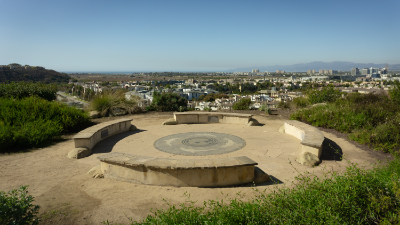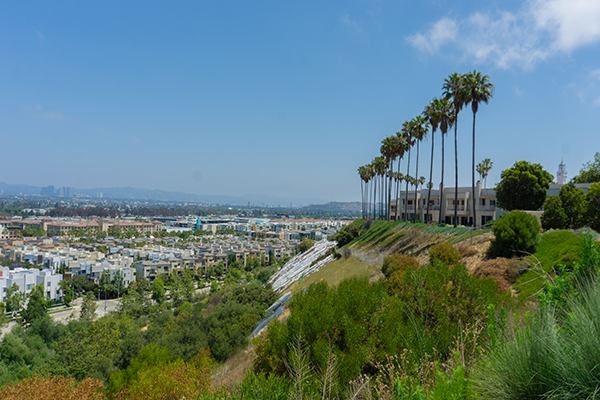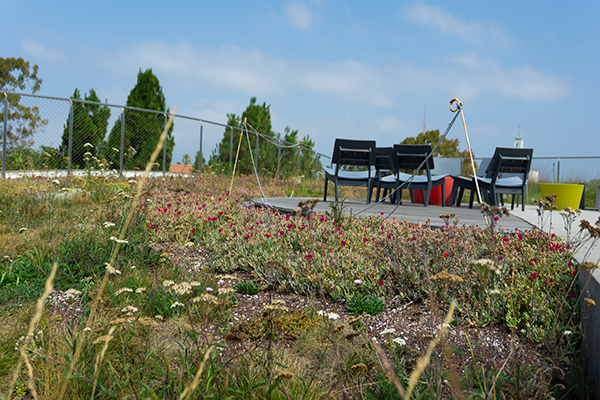Green Spaces

Tonga Memorial Garden
LMU does implement the use of native plant species in the landscaping of the campus. This program concentrates on plant selection, planning, and maintenance of gardens and landscapes that primarily will optimize the use of native plants. In the plant selection stage, a survey of the landscape and grounds on the university is completed. From this information, the planning stage can take place and landscapers can select the types of plants that are native to the area around the campus. Once these plants have been selected, they are placed in the areas around campus which will best suit the environment and their development. This practice continues as new landscapes become available and as more native plants become the most optimal choice

The Bluff
The LMU Bluff is adjacent to the protected Riparian Corridor of the 51 acre Ballona Freshwater Marsh ecosystem (FWM). It is managed separately from the state Ballona Wetlands Ecological Reserve (BWER) west of the property. However, the Bluff is important “fringe” habitat for birds and animals that are present in the Ballona Wetlands. To research this further, click here
We have established a monthly monitoring program to assess avian biodiversity using a repeated observational transect. In addition, we have received funding and permits to conduct regularly scheduled mist netting to ascertain migratory and resident avian biodiversity.

Green Roof - Life Sciences Building
The three-story green roof on the Life Sciences Building provides many resources to students. It functions as an “outdoor living laboratory,” with the second-level teaching terrace containing multiple garden beds with plants that allow faculty and students to experiment with seed and plant research. The third level has a space that provides 360° views of Los Angeles. The roof also contains drought-tolerant plant areas that are monitored by students to measure rain-water pollutants and storm-water retention.
Avian Biodiversity on Campus
LMU has professional biologists perform regularly scheduled surveys and community members as well as Audubon Volunteers provide additional surveillance. This monthly monitoring program in place measures avian biodiversity on campus.
Species of special concern/endangered species foraging or breeding in Ballona Wetlands:
- Belding's Savannah Sparrow
- El Segundo Blue Butterfly
- Least Bell's Vireo
- Least Tern
- Legless Lizard
- Virginia Rail
Birds that pass through Ballona Wetlands:
- Burrowing Owl (almost every winter there are one or two Burrowing Owls spotted in the Wetlands or along the Creek)
- California Gnatcatcher (rare sightings)
- California Quail (a single male and a single female were spotted several years apart, have not re-established breeding)
- Clapper Rail (hasn't been seen for a long time)
- Loggerhead Shrike (it's been declining, only winters at Ballona – rare sightings)